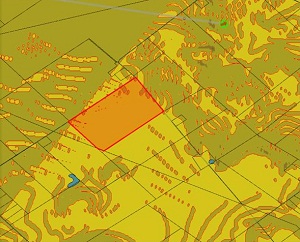One-click solar siting process closer to reality
 Understanding how all the geologic, weather and local aspects will affect a system is, at best, difficult.
Understanding how all the geologic, weather and local aspects will affect a system is, at best, difficult.
At worst, it’s a nightmare to calculate how insolation, shading, average hours of sun, heat, cold, trees and more will impact a solar array. But Geostellar’s working to make that easier.
The company plans to release an open application programming interface (API) to allow solar companies and developers to build their own applications using Geostellar’s software and data and customize it to their needs. Geostellar specializes in bringing together diverse sets of data and coordinating them for solar installers and developers. Detailed information collected includes shading information, local incentives, impacts of weather, even how roof shape and pitch can affect a potential installation.
“We have these computation engines and a huge amount of source information, and we produce new information off the source information,” said CEO David Levine. The company can use the data to develop high resolution digital models of a location, which is used to calculate annual production estimates and peak power production of a potential installation.
“There’s a lot of information we compute for the whole U.S. for comparative reasons. But we can’t maintain or retain minute-by-minute information because most sites won’t be developed or won’t be developed until 20 years,” Levine said. The API will allow developers to recreate the model and adapt it to their needs.
At this point, the company has three partners working on third-party applications. The company plans on releasing more information about the API and the applications in July, according to Levine.
One third-party proposal is to develop software that takes Geostellar data and allows users to prepare a proposal with one button.
“We’re exposing as much as we can so that we can stay as an ecosystem or platform with as many third-party applications as possible,” Levine said.
The API is free to developers, according to Levine.
“Basically, we’ve worked out a profit sharing [arrangement],” he said. ”If they drive revenue to our platform, they get a share of that. And our current customers, if they use our site design tools or whatnot, then we would get a cut of their revenue.”
As Geostellar continues to develop its platform, it’s finding that clients want a one-click solution.
“What we’re hearing more and more is people want fully automated design, he said. “It really isn’t far off when people are entering an address and getting all the options [from one application].”
That one-click design, however, may be for specialized solar technologies, according to Levine.
“Folks interested in the third-party API might have a particular concentrated PV system, or for commercial, they may have a unique thin-film system,” he said. “They want to take their design tool and take it to their clients.”



